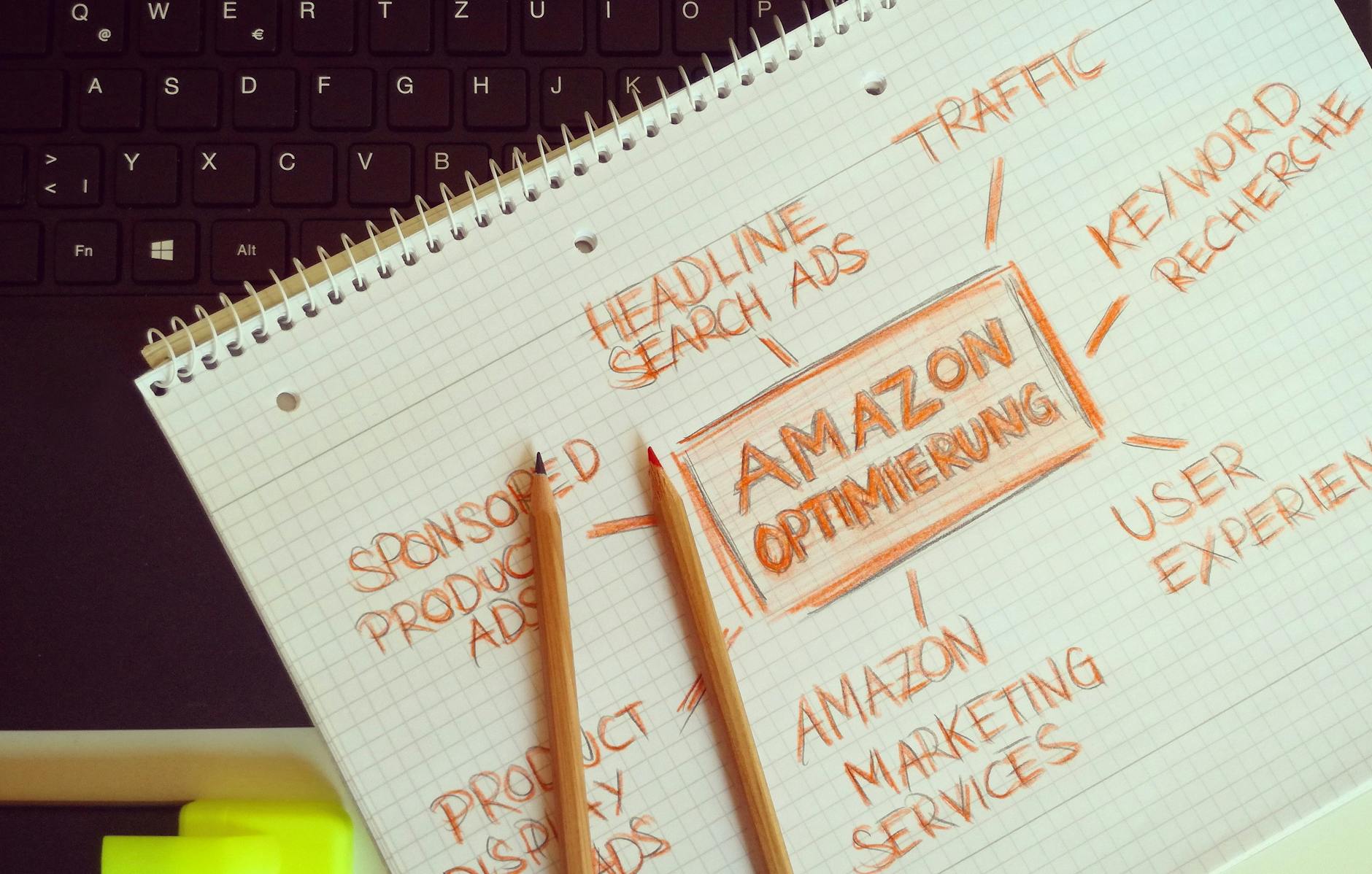Amazon reselling means buying products cheaply and reselling them at a profit on Amazon. The model appeals to both beginners and professionals because hardly any other marketplace offers such a large audience and the entry hurdle is comparatively low. Whether via retail arbitrage, wholesale or even dropshipping - the opportunities to get started flexibly and test different product ideas are enormous.
Nowadays, more and more retailers are using this opportunity to set up their first online business or expand their existing range. The focus is on good market analysis, smart tools and automated processes. The potential to benefit from current trends and growing demand, even as a small business, makes amazon reselling more attractive than ever. If you are prepared to invest time in research and smart procurement, this model provides a scalable basis for long-term success.
Amazon reselling is much more than just buying and selling. It is a clever business model that retailers use to buy products cheaply and resell them at a profit on the Amazon marketplace. You are under no obligation to manufacture your own products, nor do you have to run a well-known brand. It is much more important to have a good feel for current trends, market demand and the ability to filter out profitable items from Amazon's huge range.

Photo by Tobias Dziuba
The principle is simple: you buy goods from various sources - from local retailers, online stores, directly from wholesalers or from remaining stock - at the lowest possible prices. You then offer them on Amazon to a large audience at a higher price. Your profit is the difference between the purchase price and the sales price, minus all costs incurred such as shipping, storage and Amazon fees.
The variety is what makes Amazon Reselling so exciting. The following sources of supply are open to you:
To really make a profit in amazon reselling, you need more than just luck and a good eye for prices. You should pay attention to the following factors:
The Amazon reselling process is usually divided into these steps:
These steps are constantly repeated and can even be automated with the right software.
Amazon reselling is the entry point into e-commerce for many people today. You don't need a lot of start-up capital or your own warehouse, but you can scale up your sales with targeted research and smart tools. A major advantage is independence: whether as a side income, business start-up or to expand an existing business, with Amazon reselling you face few barriers to entry and reach millions of potential customers.
If you want to make a lasting profit in Amazon Reselling, you cannot avoid data-based product selection. Demand is changing rapidly right now, new opportunities are emerging around trend products, while classic bestsellers such as electronic accessories, household goods and beauty products remain in stable demand. With a systematic look at market data, intelligent research tools and a focus on competition, margin and seasonality, sellers can minimize risk and secure a place at the top.
Effective product research is at the heart of successful Amazon reselling. In the past, gut instinct and luck were enough, today numbers and clever software count. The best sellers use various marketplace analytics, AI extensions and specialized tools to validate competition, demand and potential profit margins.

Photo by Tobias Dziuba
Which tools are particularly popular?
Many sellers now also use AI-driven extensions that automatically analyze product potential and margins. They quickly show whether a product has a stable demand or is just a short-term hype. This data-based selection is particularly worthwhile in the electronics sector (e.g. Bluetooth speakers, wireless chargers) or for special products such as limited editions, pet supplies and household goods.
Pay attention to these success factors when making your selection:
To avoid oversaturation and costly mispurchases, experienced retailers regularly check the product life cycle, monitor price trends and use historical sales data. Automated tools can make the difference because they evaluate huge amounts of data and provide a market overview in minutes.
With this mix of analysis and smart tools, amazon reselling remains calculable and profitable, regardless of whether you focus on classics such as household goods or recognize and use new trends.
Efficient procurement is the foundation for sustainable success in Amazon reselling. Only those who know the right purchasing channels and select their suppliers specifically can secure strong margins and minimize the risk of incorrect purchases or supply bottlenecks. This phase often determines whether your offer remains competitive - and whether you can react flexibly to price fluctuations.
 Photo by fauxels
Photo by fauxels
Amazon resellers have access to a wide range of different procurement channels - depending on the business model, the desired degree of automation and their own start-up budget. These have proven particularly successful:
A strong supplier is more than just a favorable price. You should pay attention to these points:
Many sellers make similar mistakes at the beginning. Common stumbling blocks are:
Modern procurement thrives on automation. Various software solutions simplify the selection and management of suppliers, allow quick price comparisons and automatically assess risks.
Advantages of digital sourcing tools:
To survive in the long term, you should:
Careful preparation and a good network are worth their weight in gold when it comes to sourcing. This will ensure that your Amazon reselling business remains profitable and flexible.
If you want to stay at the top of Amazon Reselling in the long term, you need more than luck or strong purchase prices. It's about having a smart strategy and continuously developing the business. From start to continuous growth, there are certain key factors that successful resellers never miss out on. These factors turn occasional sellers into true professionals with stable sales.
 Photo by Tobias Dziuba
Photo by Tobias Dziuba
Little works in amazon reselling without sound analysis. Those who find profitable niches and recognize trends have a solid foundation. Successful sellers:
Clear tactics are also needed for pricing. The best resellers rely on:
How and where you buy determines your future success. Successful Amazon resellers:
Efficient processes help to save time and money:
Even if the business is scalable, customer service remains a key success factor:
Amazon reselling is dynamic: rules change, trends come and go. Successful sellers regularly invest in training, try out new tools and are guided by market data. They observe other sales channels and test new sales channels such as social media or special niche platforms.
Conclusion: Success in amazon reselling is no coincidence. The better you optimize your processes, rely on data and are willing to constantly learn, the more your business will grow.
The most important success factors at a glance:
Success factorWhy crucialMarket research & product analysisMinimize the risk of bad buysPrice and offer managementKeeps margins stable, secures buy boxEfficient sourcingOffers competitive and quality advantagesAutomated processesSaves resources, creates growth potentialCustomer serviceIncreases valuation and visibilityWillingness to learn & adaptSecures long-term success
If you want to earn money with amazon reselling in the long term, you need more than one thing: an overview of your figures. Amazon evaluates every seller according to fixed key figures, and even small deviations can have consequences - from less visibility to account suspension. To avoid stumbling, you should regularly keep an eye on the most important KPIs. Smart tools help you to identify patterns, notice trends early on and optimize processes in a targeted manner.
 Photo by RDNE Stock project
Photo by RDNE Stock project
The conversion rate clearly shows you how many site visitors actually end up buying. At around 10%, this value is usually significantly higher than normal online retail on Amazon, which is a good sign. The higher your conversion, the better your ranking and sales. Equally important: the keyword ranking. Products that are on page one for relevant search terms generate more clicks and sales. Use tools such as Rank Tracker so that you can see at any time whether your optimizations are working - this saves money and prevents a drop in visibility.
The Inventory Performance Index (IPI) helps you to manage your warehouse smartly. Amazon rewards efficient sellers: if you sell too little or store too much, your IPI slips and you risk storage restrictions. A high IPI shows that you are selling goods that are in demand and not blocking shelves with slow-moving items. Check your inventory data regularly, keep an eye on "dead" items and react quickly to changing trends.
Not every sale automatically generates profit. Keep an eye on the total advertising cost ratio (TACoS) and the return on ad spend (RoAS). These key figures tell you how efficient your advertising spend is. A RoAS of at least 3:1 is usually considered healthy - you want to earn at least three times as much for every euro you invest. Also make sure you have a low ACoS to avoid paying too much for clicks. If you have your marketing KPIs under control, you will remain profitable and can allocate budget in a targeted manner.
Amazon wants satisfied buyers. The most important metrics for this are:
Only those who have these values under control can avoid stress with Amazon and remain visible in the long term. Negative reviews, high return rates or slow responses can otherwise quickly lead to a loss of ranking or even account suspension.
Manual monitoring is hardly worthwhile if you are running several products or promotions at the same time. Modern tools such as MetricsCart or Amazon Seller Central Dashboards help you to record all KPIs at a glance. Here you can:
These digital helpers keep you agile, save time and reduce the risk of downtime.
Practical conclusion: Those who actively manage their key performance indicators in amazon reselling will recognize opportunities and weaknesses early on and stay one step ahead of the competition.
Amazon reselling remains a powerful way to get off to a flexible and growth-oriented start in e-commerce. If you are prepared to use market analyses and tools, you can make informed decisions right from the start instead of relying on luck. Margins are not created in purchasing alone, but through clever processes and constant optimization.
Now is the best time to get started with a clear strategy based on data or to scale your existing business. Those who utilize the potential of automation, useful tools and carefully selected products will create a solid foundation for a sustainably profitable business.
Thanks for reading - feel free to share your experiences with amazon reselling in the comments and stay tuned for more tips on trends, tools and strategies for successful sellers.





Free places for a
collaboration in the XX: